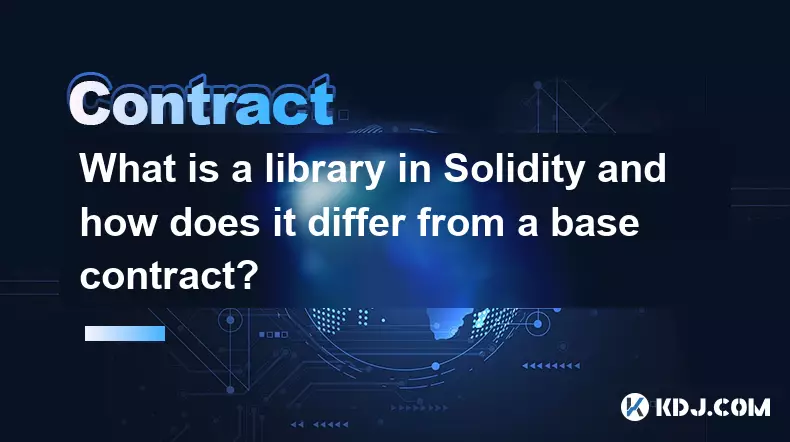-
 bitcoin
bitcoin $103128.103252 USD
-3.33% -
 ethereum
ethereum $3437.127692 USD
-4.86% -
 tether
tether $0.999700 USD
-0.02% -
 xrp
xrp $2.403993 USD
-5.73% -
 bnb
bnb $961.374676 USD
-4.11% -
 solana
solana $154.938665 USD
-8.18% -
 usd-coin
usd-coin $1.000113 USD
0.03% -
 tron
tron $0.298122 USD
0.30% -
 dogecoin
dogecoin $0.172428 USD
-5.76% -
 cardano
cardano $0.557625 USD
-7.13% -
 hyperliquid
hyperliquid $38.740701 USD
-6.51% -
 chainlink
chainlink $15.306051 USD
-7.51% -
 bitcoin-cash
bitcoin-cash $507.558648 USD
-3.26% -
 stellar
stellar $0.281899 USD
-6.74% -
 unus-sed-leo
unus-sed-leo $9.241811 USD
0.57%
Mastering Chart Patterns for Successful Crypto Futures Trading.
The head and shoulders pattern is a reliable reversal signal in crypto futures, confirmed by volume and neckline break, often signaling trend exhaustion after an uptrend.
Nov 05, 2025 at 02:55 pm

Understanding Key Chart Patterns in Crypto Futures
1. The head and shoulders pattern is one of the most reliable reversal signals in crypto futures trading. It forms after an extended uptrend and indicates weakening bullish momentum. The structure consists of three peaks, with the middle peak being the highest, resembling a head between two shoulders. When the price breaks below the neckline—a support level connecting the lows of the two troughs—it confirms the pattern.
2. Inverse head and shoulders patterns signal potential bullish reversals after prolonged downtrends. This setup mirrors the traditional head and shoulders but inverted, with the lowest point in the middle. A breakout above the neckline suggests accumulation by buyers and often precedes strong upward moves, especially when accompanied by rising volume.
3. Double tops and double bottoms are common reversal formations traders use to identify trend exhaustion. A double top occurs at resistance, where price fails twice to break higher, forming an 'M' shape. Conversely, a double bottom appears at support, creating a 'W' as bears lose control and bulls take over. These patterns work effectively in volatile crypto markets due to recurring psychological price levels.
4. Triangles—ascending, descending, and symmetrical—are continuation patterns that reflect consolidation before a breakout. An ascending triangle features a flat resistance line and rising support, indicating increasing buying pressure. A breakout above resistance often leads to aggressive rallies, particularly in leveraged futures contracts.
How Volume Validates Chart Patterns
1. Volume plays a critical role in confirming the legitimacy of chart patterns. A breakout from a consolidation phase must be supported by a noticeable spike in trading volume. Without volume confirmation, false breakouts are common, especially in low-liquidity altcoins or during off-peak market hours.
2. During the formation of a head and shoulders pattern, declining volume on the right shoulder compared to the left suggests waning interest from buyers. This divergence strengthens the bearish outlook once the neckline breaks. Similarly, rising volume on the final push of a double bottom adds credibility to the reversal.
3. In symmetrical triangles, volume typically diminishes as price converges toward the apex. A genuine breakout should coincide with a surge in volume, signaling renewed participation from institutional or algorithmic traders. Traders who ignore volume may fall victim to liquidity traps set by large players.
4. Futures markets offer open interest data alongside volume, providing deeper insight. When both volume and open interest rise during a breakout, it reflects new money entering the market. This confluence increases the probability of sustained directional movement following pattern completion.
Applying Patterns to Leverage-Based Strategies
1. Crypto futures allow traders to use leverage, amplifying both gains and risks. Chart patterns help define precise entry and exit points, essential when managing high-leverage positions. For instance, placing a long entry just above the breakout point of an ascending triangle allows for optimal risk-reward alignment.
2. Stop-loss placement is crucial in futures trading. For a head and shoulders pattern, positioning the stop just above the right shoulder minimizes exposure if the reversal fails. Tight stops based on pattern structure prevent catastrophic losses during sudden liquidations.
3. Measured objectives derived from chart patterns guide profit targets. In a double bottom, the projected move equals the depth of the trough added to the breakout point. This method provides a quantifiable target, helping traders scale out of positions systematically instead of relying on emotion.
4. Pattern reliability varies across timeframes. Higher timeframes like 4-hour or daily charts produce more dependable signals than 5-minute setups, which are prone to noise. Swing traders focusing on 8x to 25x leverage benefit most from multi-candle patterns on these stable intervals.
Common Pitfalls in Pattern Recognition
1. Overfitting patterns to fit desired outcomes is a widespread issue. Traders often force a head and shoulders shape onto random price swings, leading to premature entries. Discipline requires waiting for full pattern completion and confirmation before acting.
2. Ignoring market context reduces effectiveness. A bullish flag forming during a macro downtrend may fail despite textbook structure. Aligning chart patterns with broader sentiment, funding rates, and Bitcoin dominance improves accuracy.
3. Chasing breakouts without confirmation results in frequent whipsaws. Price can briefly pierce a resistance level only to reverse sharply, triggering stop losses. Waiting for a candle close beyond the key level with strong volume mitigates this risk.
4. Emotional bias skews interpretation. Bullish traders may see ascending triangles everywhere, while bearish ones anticipate constant breakdowns. Maintaining a neutral stance and using objective criteria ensures consistency across diverse market phases.
Frequently Asked Questions
What is the most reliable chart pattern for crypto futures?The head and shoulders pattern has historically shown high reliability, especially when confirmed with volume and tested across multiple timeframes. Its clear structure and measurable target make it favorable among professional traders.
Can chart patterns predict sudden crypto market crashes?While no pattern guarantees prediction of black swan events, certain formations like rounding tops or island reversals have preceded major downturns. These setups reflect gradual distribution before panic selling, offering early warnings if recognized in time.
Do chart patterns work equally well across all cryptocurrencies?Major assets like Bitcoin and Ethereum exhibit stronger pattern validity due to higher liquidity and participation. Low-cap altcoins often display erratic behavior, making classical patterns less dependable unless combined with on-chain metrics.
How long does a typical chart pattern take to complete?Completion time varies widely. Flags and pennants may resolve in under 24 hours, while larger structures like double bottoms or broadening tops can take weeks. Timeframe selection directly influences holding periods and trade frequency.
Disclaimer:info@kdj.com
The information provided is not trading advice. kdj.com does not assume any responsibility for any investments made based on the information provided in this article. Cryptocurrencies are highly volatile and it is highly recommended that you invest with caution after thorough research!
If you believe that the content used on this website infringes your copyright, please contact us immediately (info@kdj.com) and we will delete it promptly.
- DESK Token, Tokenized Real Estate, and Venture Hub: A New Era in Digital Assets
- 2025-11-12 16:55:02
- JPM Coin, Blockchain, and Public Tokens: The Future of Institutional Finance?
- 2025-11-12 17:10:00
- Ethereum's Whale Watch: Upgrade Incoming!
- 2025-11-12 17:10:00
- DOGE: Analyzing the Price and Potential – Will Dogecoin Reach $1?
- 2025-11-12 17:10:02
- JPMD, USD Token, and Base Network: JPMorgan's Blockchain Leap
- 2025-11-12 17:10:02
- Treasury Plays Evolve: Beyond MSTR with Blockchain Engineering
- 2025-11-12 17:20:01
Related knowledge

What is a Denial of Service (DoS) attack in a smart contract and what are its common forms?
Nov 10,2025 at 05:20am
Understanding Denial of Service in Smart Contracts1. A Denial of Service (DoS) attack in the context of smart contracts refers to a scenario where a m...

What is a cryptographic nonce used for in transaction signing?
Nov 11,2025 at 05:59am
Understanding Cryptographic Nonces in Blockchain Transactions1. A cryptographic nonce is a random or pseudo-random number used only once in the contex...

How does inheritance work in Solidity smart contracts?
Nov 11,2025 at 10:40pm
Inheritance in Solidity: Building Modular Smart Contracts1. Inheritance in Solidity allows one contract to adopt the properties and functions of anoth...

What is a Minimal Proxy Contract (EIP-1167) and how does it save gas on deployment?
Nov 12,2025 at 11:39am
What is a Minimal Proxy Contract (EIP-1167)?1. A Minimal Proxy Contract, standardized under Ethereum Improvement Proposal (EIP) 1167, is a lightweight...

What is a library in Solidity and how does it differ from a base contract?
Nov 12,2025 at 09:19am
Understanding Libraries in Solidity1. A library in Solidity is a special type of contract designed to hold reusable functions that can be shared acros...

How do you safely send Ether to another contract?
Nov 09,2025 at 06:40pm
Sending Ether to Smart Contracts: Key Considerations1. Verify that the receiving contract has a payable fallback function or a designated payable func...

What is a Denial of Service (DoS) attack in a smart contract and what are its common forms?
Nov 10,2025 at 05:20am
Understanding Denial of Service in Smart Contracts1. A Denial of Service (DoS) attack in the context of smart contracts refers to a scenario where a m...

What is a cryptographic nonce used for in transaction signing?
Nov 11,2025 at 05:59am
Understanding Cryptographic Nonces in Blockchain Transactions1. A cryptographic nonce is a random or pseudo-random number used only once in the contex...

How does inheritance work in Solidity smart contracts?
Nov 11,2025 at 10:40pm
Inheritance in Solidity: Building Modular Smart Contracts1. Inheritance in Solidity allows one contract to adopt the properties and functions of anoth...

What is a Minimal Proxy Contract (EIP-1167) and how does it save gas on deployment?
Nov 12,2025 at 11:39am
What is a Minimal Proxy Contract (EIP-1167)?1. A Minimal Proxy Contract, standardized under Ethereum Improvement Proposal (EIP) 1167, is a lightweight...

What is a library in Solidity and how does it differ from a base contract?
Nov 12,2025 at 09:19am
Understanding Libraries in Solidity1. A library in Solidity is a special type of contract designed to hold reusable functions that can be shared acros...

How do you safely send Ether to another contract?
Nov 09,2025 at 06:40pm
Sending Ether to Smart Contracts: Key Considerations1. Verify that the receiving contract has a payable fallback function or a designated payable func...
See all articles


























![[4K 60fps] no care by crashpancake2 (1 Coin) [4K 60fps] no care by crashpancake2 (1 Coin)](/uploads/2025/11/12/cryptocurrencies-news/videos/6913a8862890b_image_500_375.webp)














































